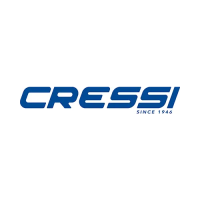82
2.9 – XS2 2nd stage
Second stage supplies air “on demand”, that is only when the
diver inhales from the mouthpiece, causing a slight vacuum insi-
de the regulator, which must be very slight in order not to make
breathing difficult. Such vacuum acts on the diaphragm, which is
sucked in towards the inside, causing the central plate to touch
the lever. The latter opens the air supply valve.
The valve of XS2 is composed of a renovated modular poppet in
plastic and chromium-plated brass, which is interchangeable
with previous models of XS range: on one side, it is connected to
the lever, on the other side, it houses a newly designed thicker
rubber pad, closing the new adjustable nozzle, through which
the air flows at a pressure by 10 bar (145 psi) higher than the
environmental.
The air contained in the nozzle pushes the pad, which is contra-
sted by the poppet’ s spring.
Therefore, the renovated poppet “floats” between the push of in-
flowing air and the spring which, having a slightly higher
strength, closes the nozzle perfectly.
The adjustable nozzle is placed inside the valve seat. The outflow
air, when the mechanism is open, is directed through the injec-
tor and directly into the mouthpiece.
When the air flow inside the injector towards the mouthpiece
increases, it generates a vacuum inside the regulator’ s case,
due to its acceleration. This vacuum, called Venturi effect flattens
the diaphragm, remarkably reducing the diver’ s breathing effort.
The Venturi effect immediately stops as soon as the diver stops
breathing. The diaphragm returns to its normal position, the lever
comes up again pushed by its spring, and the nozzle is closed by
the piston.
To optimize the Venturi effect, XS2 CE is supplied with a flow
deflector with two operating modes, clearly shown by the scale
on the regulator housing:
pre-dive “-“ and dive “+” (picture 19). In first mode, a flow limiting
device placed in the mouthpiece inlet starts operating and inhibits
the Venturi effect, preventing free flow. In “+” mode, the Venturi
effect works at its best, increasing the air flow supplied to the reg-
ulator to the maximum level.
� WARNING: Always remember to set the flow deflector’ s
lever in pre-dive (-) mode when not using the regulator;
otherwise, an accidental collision, the regulator falling into
water, pressing the manual regulation button without having
the mouthpiece in one’ s mouth, or suddenly taking the regu-
lator out of the mouth might operate a strong free flow, cau-
sing high air consumption.
The dive (+) mode can only be used while diving and only
when the regulator is inside the mouth.
fig. 18
SECOND STAGES

